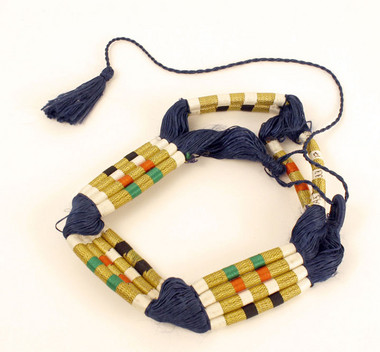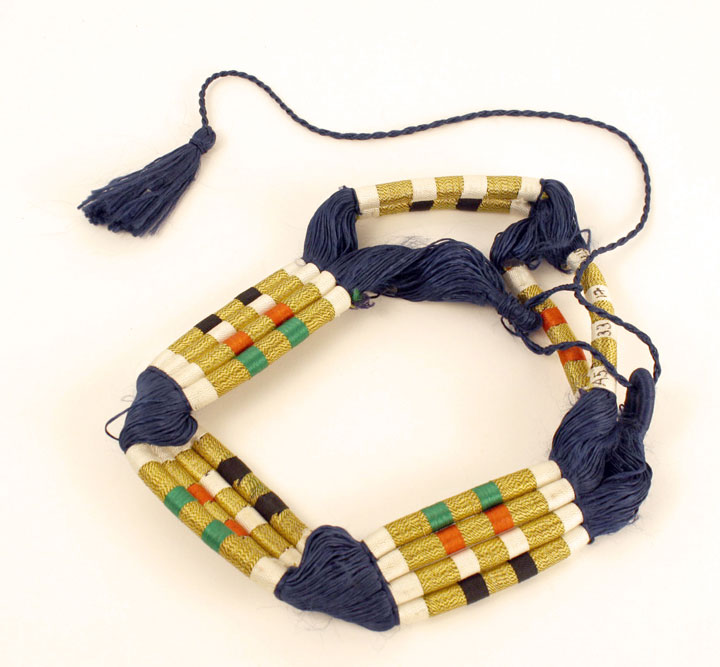Arab Man's Headband (Agal)
Although symbols of tradition, the wearing of the agal and keffiyeh remains common in rural areas throughout the Arab world, where men wore (and wear) some kind of head covering to protect them from the sun, dust and sand. This covering was normally a scarf formed of square of cotton material known as a keffiyeh or kufiya, (from the Arabic: كوفية, ) and known as a ghutrah, ḥaṭṭah, mashadah, shemagh, chafiye, puşi and kaffiyah in other regions and languages. The scarf was held in place by a draw string cord, known as the agal (Arabic: عقال, ‘iqāl).
The colour, thickness, material, design and number of layers of the agal reveal a great deal about the wearer’s origin and status. Most are black and woven from camel hair or brown and white. They vary in texture depending on the materials used and the tightness of the weave. This one is a decorative version made of four woven bands is in the style favoured by King Faisal of Iraq and is known as the King Faisal agal. It is made of blue silk threads bound at places into either four or two bands with gold thread and then decorated with black, orange, green and white bands. When fitted on the head it has a crown-like appearance. The tassle is part of a simple loop structure which can be pulled to adjust to the head size.



Although symbols of tradition, the wearing of the agal and keffiyeh remains common in rural areas throughout the Arab world, where men wore (and wear) some kind of head covering to protect them from the sun, dust and sand. This covering was normally a scarf formed of square of cotton material known as a keffiyeh or kufiya, (from the Arabic: كوفية, ) and known as a ghutrah, ḥaṭṭah, mashadah, shemagh, chafiye, puşi and kaffiyah in other regions and languages. The scarf was held in place by a draw string cord, known as the agal (Arabic: عقال, ‘iqāl).
The colour, thickness, material, design and number of layers of the agal reveal a great deal about the wearer’s origin and status. Most are black and woven from camel hair or brown and white. They vary in texture depending on the materials used and the tightness of the weave. This one is a decorative version made of four woven bands is in the style favoured by King Faisal of Iraq and is known as the King Faisal agal. It is made of blue silk threads bound at places into either four or two bands with gold thread and then decorated with black, orange, green and white bands. When fitted on the head it has a crown-like appearance. The tassle is part of a simple loop structure which can be pulled to adjust to the head size.




















